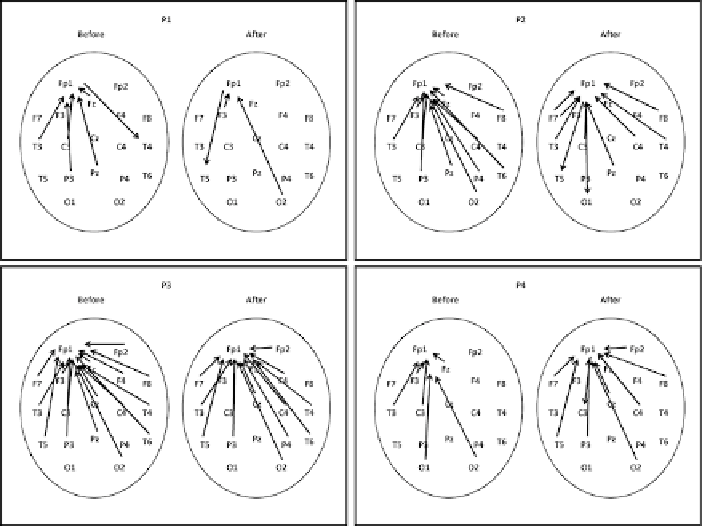Information Technology Reference
In-Depth Information
Fig. 19.4: This is the connectivity plots for the four patients derived from the
nonlinear interdependence metrics that involve the channel Fp1.
19.5 Conclusion and Discussion
Effectiveness of an add-on AED in treatment of ULD was measured by the de-
gree of reduction of UMRS after treatment. Patients with 25% or greater in UMRS
were considered responders to the add-on AED treatment. As mentioned above, it is
not easy to precisely perform such evaluation scheme especially in the later stages
of the disease. Furthermore, the UMRS is a skewed measure that may not detect
functional changes in a patient when these changes may be clinically important. In
fact, changes in the UMRS scores after treatment were significant (
25%) only in
patient 1, then patient 2, patient 3, and patient 4 had clinically meaningful improve-
ment. Furthermore, the patient with least disease severity (patient 1) had paradoxi-
cally the higher baseline UMRS score only because patient 2-patient 4 were bed rid-
den and their UMRS did not include arising, standing, and walking. For this reason
the UMRS scores for patient 2-patient 4 could be artificially lowered by 48 points
(4
≥
48 points). We believe that the UMRS may
not be the appropriate tool for measuring AED improvements in myoclonus in ULD
patients and maybe misleading at times. The present study objectively measures the
mutual information and nonlinear interdependencies in the cortical network before
and after an add-on AED treatment.
×
4
=
16 points per test, 3 tests
=

